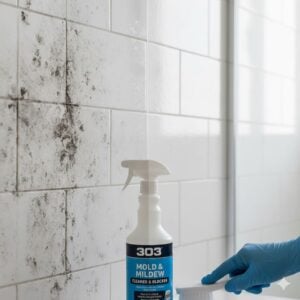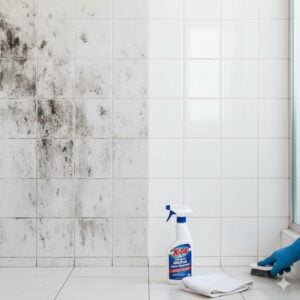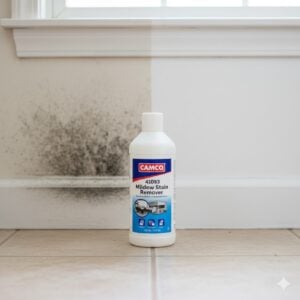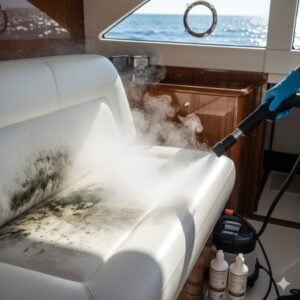That musty, unpleasant odor coming from your washer isn’t just annoying — it’s a sign of hidden mildew. Many UAE households experience this problem because of humidity, detergent residue, and constant AC use. If you’re searching for how to get rid of mildew smell in washing machine, understanding the causes, safe DIY cleaning methods, and when to call professional help can save your appliance and your clothes. Here’s a detailed guide with eight practical tips, common DIY risks, and how experts like Bio-On UAE handle the issue effectively.
Table of Contents
ToggleWhy Washing Machines Develop Mildew Smell
Mildew thrives in warm, damp, and enclosed spaces — and your washing machine provides exactly that. The mix of detergent residue, fabric lint, and trapped moisture creates a breeding ground for fungi and bacteria. Over time, this buildup causes a sour or moldy odor that sticks to your laundry.
In the UAE, where air humidity is high and washers are often kept in enclosed laundry rooms, this problem becomes even more common. Without regular maintenance, mildew can spread to rubber seals, drain hoses, and even your clothes.
8 DIY Tips to Remove Mildew Smell from Washing Machine
1. Run a Hot Water Cycle with Vinegar
Fill your washer with the hottest water setting, add two cups of white vinegar, and run a full cycle without laundry. The acid in vinegar breaks down soap residue and kills odor-causing bacteria. Repeat once a month to prevent buildup.
2. Use Baking Soda for Deodorization
After the vinegar cycle, sprinkle half a cup of baking soda directly into the drum and run another hot cycle. Baking soda neutralizes odor and balances pH, leaving your washer smelling clean.
3. Clean the Rubber Gasket
The rubber seal around the washer door traps moisture and lint. Mix equal parts of vinegar and water, dip a cloth, and wipe the gasket thoroughly. Pay special attention to black mold spots — these are mildew colonies. Dry completely with a towel afterward.
4. Wash the Detergent Drawer
Remove the detergent tray, rinse it under hot water, and scrub off residue using a small brush. Detergent buildup feeds mildew growth. Make sure the compartment is fully dry before reinserting it.
5. Leave the Door Open After Every Wash
Air circulation is crucial. Keep your washer door open for several hours after use to allow the interior to dry naturally. This simple habit dramatically reduces mildew risk, especially in humid regions like the UAE.
6. Check and Clean the Drain Pump Filter
Most front-loading washers have a drain pump filter near the bottom. It collects lint, hair, and small objects. Clogged filters trap moisture and cause bad smells. Clean it every two to three weeks to maintain proper drainage and airflow.
7. Use the Right Amount of Detergent
More soap doesn’t mean cleaner clothes. Excess detergent creates residue that traps moisture, becoming food for mildew. Follow manufacturer guidelines or use high-efficiency (HE) detergents in moderate amounts.
8. Wipe the Drum and Exterior Regularly
Once a week, wipe the inside drum and exterior with a damp microfiber cloth and mild disinfectant. This prevents dust, detergent, and mildew particles from building up between deep cleanings.
Common DIY Cleaning Mistakes
While these DIY methods help prevent mildew smell, some errors can make the situation worse:
- Mixing vinegar with bleach — this releases toxic chlorine gas.
- Using too much vinegar or baking soda — it can damage rubber and internal parts.
- Ignoring filters and hoses — partial cleaning leaves bacteria behind.
- Not drying components — residual moisture restarts mildew growth within hours.
DIY is useful for maintenance but can’t fix deeply embedded mold or odor that’s spread into the drainage system. That’s when expert help becomes essential.
Risks of DIY Mold and Mildew Cleaning
Improper DIY cleaning can cause several problems:
- Hidden contamination: You might clean visible areas but leave spores inside pipes or filters.
- Damage to rubber seals: Overuse of acidic cleaners weakens material, causing leaks.
- Persistent odor: Surface cleaning doesn’t neutralize mold beneath the drum or in hoses.
- Health concerns: Inhaling mildew spores or fumes from chemical reactions can irritate lungs.
Professionals use controlled, high-temperature methods that kill fungi completely without damaging your appliance.
How Experts Like Bio-On UAE Handle Mildew Odor
Bio-On UAE specializes in deep cleaning and odor elimination for appliances and interiors. When handling mildew smell in washing machine, our process targets not just the odor but its biological source — fungi, bacteria, and trapped moisture.
Our team inspects your washer for mold growth, clogged filters, and pipe residue, then applies advanced sanitation techniques such as:
- Steam disinfection: High-temperature vapor penetrates unreachable parts and kills spores.
- Anti-microbial rinsing: Eco-friendly solutions remove bacteria and prevent regrowth.
- Drain and hose flushing: Clears soap scum and mildew buildup from the inside.
- Ozone or deodorization treatment: Neutralizes leftover odor molecules naturally.
Bio-On also checks your home’s humidity and ventilation to prevent future mold. This scientific approach provides a long-term solution instead of temporary masking.
Estimated Cost of Professional Service in UAE
Professional cleaning for washing machines is affordable compared to the cost of appliance repair or replacement. Here’s an approximate price range for UAE residents:
- Basic odor removal and cleaning: AED 120–200
- Full steam disinfection and pipe cleaning: AED 250–400
- Advanced ozone deodorization or mold treatment: AED 400–600
Prices may vary depending on machine type, severity of odor, and location. Bio-On UAE provides a free assessment before starting the cleaning process.
DIY vs Professional Cleaning: Comparison
| Aspect | DIY Cleaning | Professional Cleaning (Bio-On UAE) |
|---|---|---|
| Odor Removal | Temporary; returns within days | Permanent elimination with steam & ozone |
| Disinfection Level | Partial (surface only) | Complete (kills hidden mold & bacteria) |
| Material Safety | Risk of damaging rubber or sensors | Safe, manufacturer-approved methods |
| Duration | 1–2 hours | 2–3 hours including drying & testing |
| Cost | Low but repetitive | Moderate, long-lasting results |
How to Prevent Mildew Smell After Cleaning
- Leave the washer door open after every cycle to let moisture escape.
- Clean the detergent drawer and filter monthly.
- Use less detergent and avoid fabric softeners that leave sticky residues.
- Run a hot cleaning cycle with vinegar once a month.
- Place a small moisture absorber near your washing machine in humid rooms.
When to Call Bio-On UAE
If the smell returns within days or if black mold is visible on the gasket, DIY cleaning won’t help. Bio-On UAE provides specialized odor removal services using high-pressure steam, ozone sterilization, and anti-fungal coatings that restore your washer’s freshness. This prevents mold from spreading to your clothes and laundry area.
Conclusion
Dealing with mildew smell in washing machine is about more than masking odor—it’s about eliminating its cause. Simple DIY tricks like vinegar and baking soda help for light buildup, but deep-seated mildew needs expert intervention. With professional-grade cleaning, Bio-On UAE ensures your washing machine stays fresh, sanitized, and safe for your family. Contact us today through WhatsApp, phone call, or the form on this page to schedule a free assessment and say goodbye to mildew for good.













